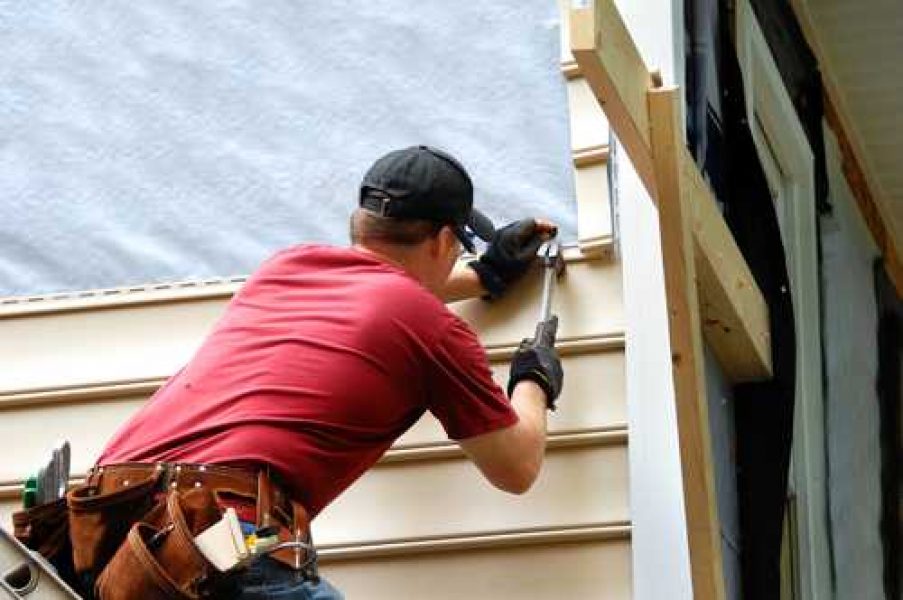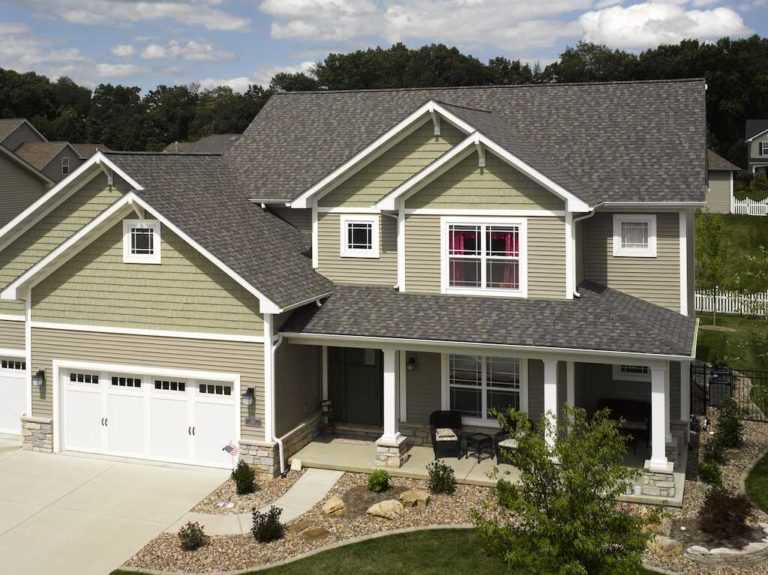Many homeowners think of upgrading windows or insulation to enhance their home’s energy efficiency. However, an equally impactful but often overlooked element is the siding. Siding is crucial in protecting your home from the elements, contributing significantly to its thermal performance and overall energy efficiency. Our team at Resistance Exteriors will explain how siding affects your home’s energy efficiency and why it should be a key consideration for any energy-conscious homeowner.
Understanding Energy Efficiency in Homes
Before we dive into the specifics of how siding influences energy efficiency, it’s essential to understand what energy efficiency means in the context of a home. A home that is energy efficient uses less energy to maintain comfortable living conditions. This involves minimizing heat loss during colder months and reducing heat gain during warmer months. Factors influencing a home’s energy efficiency include insulation quality, window and door seals, HVAC systems, and the exterior materials used – including siding.
The Role of Siding in Energy Efficiency
Siding acts as a protective shell for your home, shielding it from weather elements and helping to maintain internal temperature levels. Here’s how siding impacts your home’s energy efficiency:
Insulation and R-Value
The R-value is a measure of thermal resistance, indicating how well a material can resist heat flow. High-quality siding with a high R-value can provide an additional layer of insulation to your home, reducing heat transfer. This means less strain on your heating and cooling systems and, consequently, lower energy bills.
Material Matters
The type of material used for siding can significantly affect its energy efficiency. Materials like vinyl and fiber cement are popular for their durability and maintenance ease, but they also offer good insulation properties. Modern vinyl siding, for example, often includes insulated backing, further enhancing its thermal resistance. On the other hand, materials like aluminum, though durable and low maintenance, may not offer the same level of insulation without added backing.
Installation and Thermal Bridging
Even the highest quality siding won’t perform well if not properly installed. Poor installation can lead to gaps and leaks, allowing air and moisture to penetrate, which compromises the home’s thermal envelope. Additionally, thermal bridging, where heat passes through the more conductive materials in the building’s structure, can be mitigated with properly installed siding, reducing heat loss.
Weather Resistance
Siding also plays a vital role in protecting your home from the elements. Water damage, in particular, can significantly impact your home’s insulation. Moisture trapped in the walls can reduce the effectiveness of insulation, leading to higher heating and cooling costs. Quality siding materials that provide excellent weather resistance can help prevent moisture penetration and protect the integrity of your home’s insulation.
Energy-Efficient Siding Options
When considering upgrades or replacements, it is worth exploring siding options that enhance your home’s energy efficiency. Some energy-efficient siding choices include:
Insulated Vinyl Siding
One of the most popular choices for homeowners looking to enhance their home’s insulation is insulated vinyl siding. This innovative siding option integrates rigid foam insulation with traditional vinyl siding, creating a snug barrier against your home’s exterior walls. This layer of insulation significantly reduces thermal bridging—the process by which heat passes through the less insulated parts of walls—thus keeping your home warmer in the winter and cooler in the summer. Insulated vinyl siding not only improves your home’s thermal efficiency but also adds to its aesthetic appeal and can increase its overall value.
Fiber Cement Siding
Fiber cement siding is renowned for its exceptional durability, resistance to weathering, and minimal maintenance needs. Made from a blend of cement, sand, and cellulose fibers, fiber cement siding stands up well against harsh weather conditions, including extreme temperatures, which makes it an excellent choice for energy efficiency. Its substantial thickness provides an additional layer of insulation, helping to maintain stable internal temperatures. With various styles and finishes available, fiber cement siding can mimic the look of wood, stone, or brick, allowing for versatile design options that don’t sacrifice performance.
Wood Siding
For those who prefer natural materials, wood siding offers an inherently insulating option that can enhance your home’s energy efficiency. Wood’s natural properties include air pockets within its structure, which can act as insulators. When properly treated and maintained, wood siding can help keep your home comfortable year-round, reducing reliance on heating and cooling systems. However, it’s important to note that wood siding requires regular maintenance to protect it from moisture, pests, and decay, which can compromise its insulating capabilities. For added efficiency, choosing wood siding from sustainably managed forests can also contribute to an environmentally friendly home exterior.
Additional Considerations
When evaluating siding options, consider factors such as your climate, the existing insulation levels of your home, and your long-term maintenance commitment. For instance, homes in areas with extreme temperatures will benefit significantly from siding options with higher insulative properties. Additionally, combining your chosen siding with other energy-efficient upgrades, like quality windows and doors, can further enhance your home’s energy performance.
Given the array of options available, it is important to consider the benefits that upgrading your siding can bring.
Benefits of Upgrading Your Siding
Upgrading your siding to a more energy-efficient option offers several benefits:
- Reduced Energy Bills: Enhanced insulation means your HVAC system doesn’t have to work as hard, leading to noticeable savings on your energy bills.
- Increased Comfort: Improved energy efficiency helps maintain a consistent internal temperature, making your home more comfortable year-round.
- Enhanced Durability: Many energy-efficient siding options are designed to withstand harsh weather conditions, offering long-term durability and protection for your home.
- Boosted Home Value: Upgrades that improve a home’s aesthetic appeal and energy efficiency can significantly increase its value.
Choosing the Right Siding for Your Home
When selecting siding, consider factors like your local climate, the architectural style of your home, and your budget. It’s also essential to choose a reliable contractor with experience in installing energy-efficient siding options. At Resistance Exteriors, we specialize in providing quality siding solutions designed to enhance your home’s energy efficiency and curb appeal. Our team of experts can help you select and install the perfect siding that meets your needs and preferences.
Install New Siding in Delafield, WI
Siding is more than just an aesthetic feature; it plays a crucial role in your home’s energy efficiency. By choosing the right material and ensuring proper installation, you can significantly reduce energy consumption, lower your utility bills, and increase your home’s comfort. Whether you are building a new home or upgrading your existing one, investing in high-quality, energy-efficient siding is a smart choice that pays off in the long run. Get started on your siding project today by contacting our team at At Resistance Exteriors in Delafield, WI, by calling (262) 951-0875 to request a free estimate.


